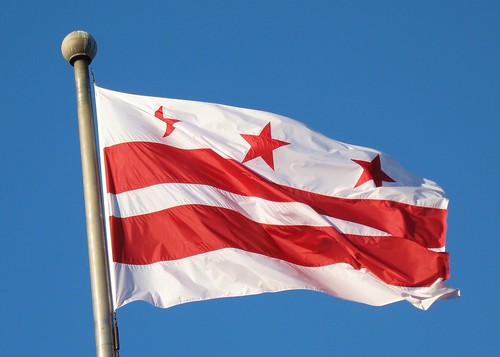The way we visualize and compare cities says much about our understanding of how they work. As part of our ongoing exploration of what makes a city, we wanted to survey how people are using data to describe the political, geographical and social realities cities face. Below, we've compiled some unique visualizations. Some of these center around cities in the common sense of the word, focusing on large urban areas, but we think these images as a group help expand the understanding of the diversity of all kinds of municipalities. We aren't demographers, but we aren't working in a vacuum, either. As we continue to engage in open data work, we hope to contribute to the kind of information that powers these visuals and help create the resources for the next wave of municipal understanding.
POPULATION DENSITY
1. This 2010 U.S. Census map, from a report about population change, shows population-weighted density by metropolitan statistical area. That's a complicated way of essentially saying the map shows how tightly packed people are on average in metropolitan areas, as defined by the U.S. Census Bureau. The map shows how people generally are more condensed in metropolitan areas along the East and West coasts than they are in metropolitan areas in the middle of the country. Continue reading
Continue reading
Utah Introduces Open Data Bill, Invites Public Into the Drafting Process
What if the information that you usually have to “FOIA” or ask your government for under your state’s public records... View Article
Continue readingWhat is a City?
As we expand on our vision for local government transparency, we realize we need to start with defining what we mean by local. The general scope of the work we’re taking on is targeted at the idea of “municipal” government, something we’ve been referring to internally as city government, though we’ve quickly realized it’s not that simple. Municipal government takes many forms, and if we’re being accurate, we have to set our scope a bit wider. In the United States, a municipal government is a local government that has been authorized or incorporated according to state constitutions and statutes. Depending on the state, a municipality could be a city, town, or village, or even a borough or township. There are more than 19,000 incorporated places (e.g. municipalities), according to 2010 U.S. Census data, and they vary dramatically in size, shape, and structure.
Continue readingSunlight Goes Local
If you caught yesterday’s announcement, you may have noticed a new major focus for the Sunlight Foundation: local government transparency.... View Article
Continue readingNew York Proposed Regulations Move Toward Greater Campaign Finance Disclosure
Yesterday, New York Attorney General Eric Schneiderman attempted to throw down the gauntlet on campaign finance disclosure regulations for New... View Article
Continue readingMontgomery County’s New Open Data Bill
This afternoon, the Montgomery County Council voted unamimously in favor Bill 23-12, the Mongtomery County Open Data Act of 2012.... View Article
Continue readingThe DC Council should consider improved lobbying disclosure
 The idea that Washington, DC's lobbying disclosure schedule is inadequate is not new, but it might be easy to improve thanks to new legislation targeting campaign finance reform.
Lobbying and campaign finance are inherently linked. Companies that lobby the city government invariably give to political campaigns.
Currently, those who lobby the DC government and Council only have to report their activities and expenditures twice a year. As a result, journalists, watchdogs and interested citizens often have to wait until far after important debates for crucial information about the special interests that were working to influence policy decisions. Moreover, the bi-yearly requirements make it difficult to paint a complete picture of influence spending, especially in an election year.
The idea that Washington, DC's lobbying disclosure schedule is inadequate is not new, but it might be easy to improve thanks to new legislation targeting campaign finance reform.
Lobbying and campaign finance are inherently linked. Companies that lobby the city government invariably give to political campaigns.
Currently, those who lobby the DC government and Council only have to report their activities and expenditures twice a year. As a result, journalists, watchdogs and interested citizens often have to wait until far after important debates for crucial information about the special interests that were working to influence policy decisions. Moreover, the bi-yearly requirements make it difficult to paint a complete picture of influence spending, especially in an election year.
Survey: How Many States Publish Rules and Regulations Online?
Earlier this year, Connecticut Governor Dannel Malloy (D) signed a bill that would require that all state regulations be posted... View Article
Continue readingMaryland Comptroller Calls for Real-Time Disclosure
Today, in an address at Goucher College, the Comptroller of the State of Maryland, Peter Franchot, called on the governor... View Article
Continue readingCuomo’s “Leave No Trace” Administration Casts Shadows Over NY Government
“Create Open NY” is the fourth item on a list of prominent issues New York Governor Andrew Cuomo highlighted as... View Article
Continue reading
